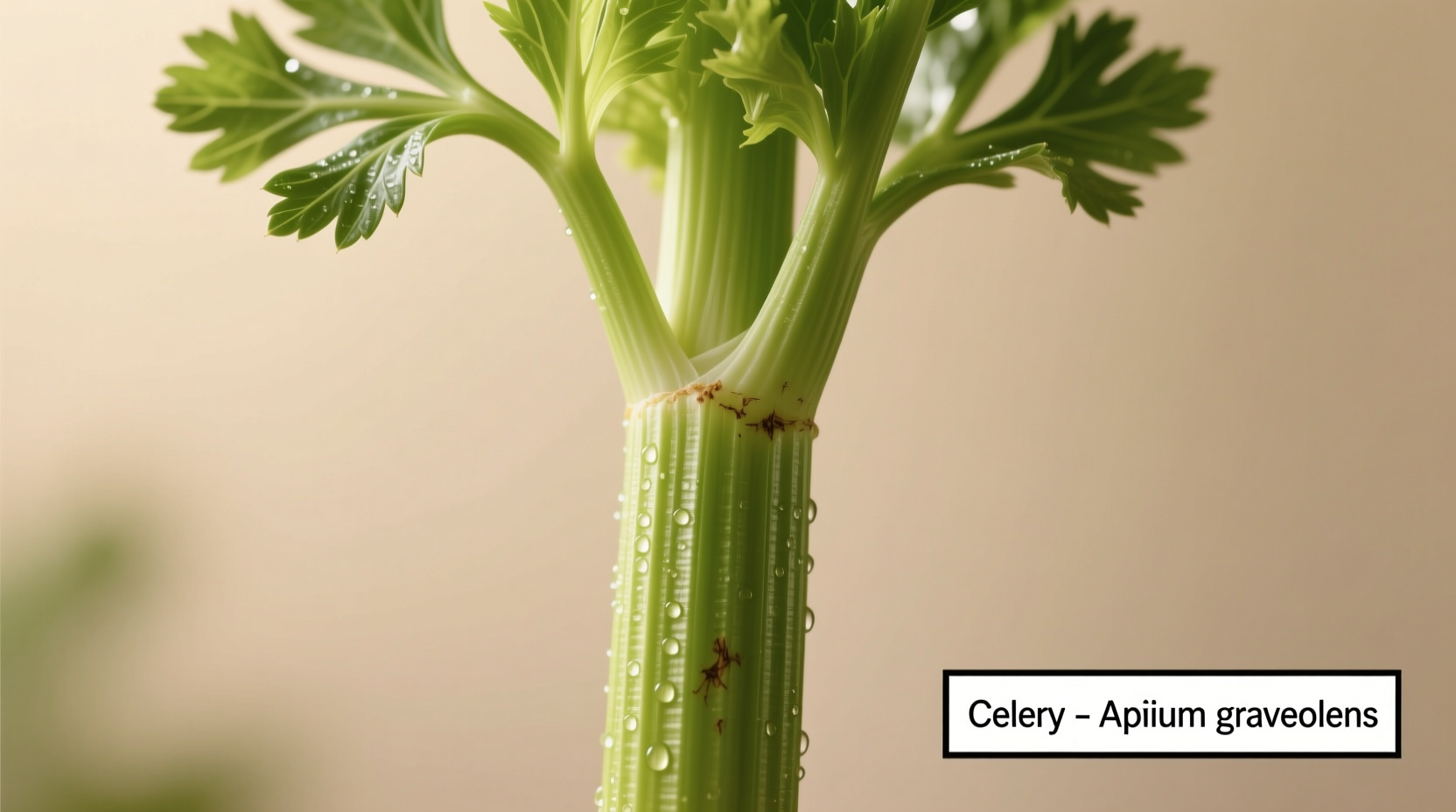Confused about celery terminology? You’re not alone. When shoppers ask what is a stalk of celery, they’re usually pointing to a single curved segment—but that’s botanically incorrect. Let’s clarify this common kitchen confusion with precise, science-backed information you can trust.
Understanding Celery Anatomy: Beyond the Terminology Trap
Celery (Apium graveolens) grows as a cluster of elongated, rib-like structures radiating from a central base called the corm. Here’s what you need to know:
- What consumers call a ‘stalk’ is actually a rib or pascal
- The entire cluster sold in grocery stores is the true stalk or bunch
- Each bunch typically contains 8-10 individual ribs
This terminology mix-up dates back to 19th century American cookbooks, where ‘stalk’ began referring to individual ribs. The USDA’s FoodData Central maintains the botanical distinction, which professional chefs and horticulturists still follow today.
| Common Term | Botanical Term | What It Actually Is |
|---|---|---|
| “Stalk” (as used by shoppers) | Rib or Pascal | Individual curved segment |
| True stalk | Petiole | Entire leaf-supporting structure |
| Bunch | Stalk (culinary) | Complete cluster of 8-10 ribs |
How to Identify Quality Celery Ribs
When selecting celery, focus on these freshness indicators:
- Vibrant green color without yellowing or browning
- Firm, crisp texture that snaps cleanly when bent
- Upright posture in the bunch (limp ribs indicate age)
- No hollow centers when examining cut ends
The FDA recommends choosing celery with tightly packed ribs, as separation indicates maturity and potential toughness. Remember: paler ribs near the base contain more sodium but less bitterness than greener outer ribs.

Storage Science: Maximizing Freshness
Proper storage dramatically extends celery’s shelf life. Research from the University of California’s Agriculture Department shows these methods work best:
- Refrigeration: Wrap in aluminum foil (not plastic) to maintain crispness for 3-4 weeks
- Water method: Submerge cut ends in water in an airtight container
- Avoid washing until ready to use to prevent premature spoilage
Discard ribs showing brown streaks or stringy textures—these indicate lignin buildup from age. Never store celery near ethylene-producing fruits like apples, which accelerate deterioration.
Nutritional Powerhouse in Plain Sight
One medium celery rib (40g) delivers remarkable nutrition according to USDA data:
- 6.4 calories with 1.6g dietary fiber (6% daily value)
- 32mg potassium and 8.1mcg vitamin K
- Phthalides that may support healthy blood pressure
- Apigenin, a flavonoid with antioxidant properties
While often dismissed as “empty calories,” celery ribs provide meaningful hydration (95% water content) and micronutrients. The fibrous strings contain insoluble fiber crucial for digestive health—don’t peel them away!
Culinary Applications: Beyond Soup Garnish
Celery ribs excel in specific cooking contexts:
- Raw applications: Outer ribs work best for crudité due to stronger flavor
- Braising: Inner ribs become tender in stews without disintegrating
- Stock making: Use all parts including leafy tops for maximum flavor
- Texture contrast: Thinly sliced ribs add crunch to salads and slaws
Professional chefs like Thomas Keller emphasize using the entire rib—including the often-discarded leafy tops—for layered flavor profiles. The inner ribs’ delicate flavor shines in celery remoulade, while outer ribs stand up to bold dressings in Waldorf salad.
When Celery Ribs Fall Short
Understanding celery’s limitations prevents kitchen disasters:
- Avoid high-heat searing: Ribs lose structure above 180°F (82°C)
- Don’t substitute for crunch: Cucumber or jicama better maintain texture in cold dishes
- Limit raw use in sensitive diets: High sodium content affects some medical conditions
For dishes requiring structural integrity like stir-fries, combine celery ribs with bell peppers or carrots. Their complementary textures create balanced mouthfeel without compromising dish integrity.











 浙公网安备
33010002000092号
浙公网安备
33010002000092号 浙B2-20120091-4
浙B2-20120091-4